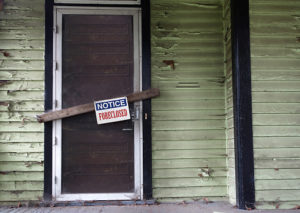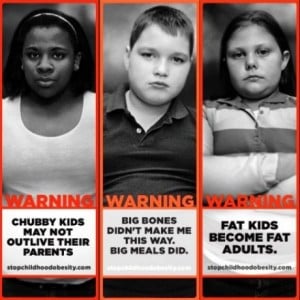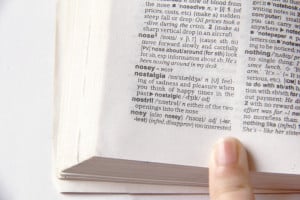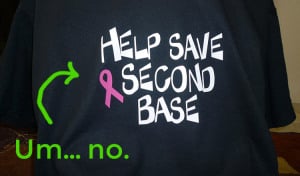
Foreclosed house
The word “gentrification” was coined by British sociologist Ruth Glass in 1964. In her book London: Aspects of Change, Glass described the upheaval of certain neighborhoods in London by the middle-class “gentry” from the countryside:
One by one, many of the working class quarters have been invaded by the middle class upper and lower. Once this process of ‘gentrification’ — starts in a district it goes on rapidly until all or most of the working class occupiers are displaced and the whole social character of the district is changed.
The first mention of gentrification in the United States was four years later, in 1969, when a white Brooklyn man named Everett Ortner founded the Brownstone Revival Coalition, a nonprofit committed to the brownstone lifestyle.
Ortner began publishing The Brownstoner, a newsletter dedicated to convincing other middle and upper-class white people to move to Brooklyn. One article proclaimed, “Gentrification is not ’genocide’ but ‘genesis.’”
Gentrification supporters such as Ortner were intent on persuading the gentry that gentrification was an organic movement made up of people who wanted to improve neighborhoods.
In other words, he and others wanted to shift the focus from larger forces to individual decisions.
In 1974 Ortner hosted a Back To The City Conference at the Waldorf-Astoria. In attendance were 250 representatives from 82 cities to promote the revitalization of brownstone neighborhoods.
The conference was sponsored by a real estate development group as well as by the Brooklyn Gas Company — in the end the conference seemed less about revitalization and more about building profits for Brooklyn real estate firms and the local gas company.
He originally purchased his home for $32K. When he passed away in 2014 his Park Slope brownstone sold for $3.8 million.
While Ortner had a hand in the gentrification of Park Slope, he didn’t do it all by himself.
Similarly, today’s hipsters and yuppies have more buying power than the folks they displace, but individuals don’t control housing markets to make the cities their own.
The graphic designer with a penchant for micro brews in San Diego isn’t conspiring with the filmmaker who loves nitro cold brew coffee in San Francisco.
Developers aren’t fully responsible for gentrification either — that house flipper in New Orleans or Joshua Tree, or those Write A House grants in Detroit don’t upend an economy.
As Peter Maskowitz aptly puts it in How To Kill A City:
Gentrification is not about individual acts.
It’s about systemic violence based on decades of racist housing policy in the United States that has denied people of color, especially Black people, access to the same kinds of housing, and therefore the same levels of wealth, as white Americans.
While we all have, at one point or another, felt that twinge of panic to pay the rent, some of us have had to turn to more desperate means.
I admit, I sometimes cringe when I see people try to crowd fund their lives — a road trip, a website they need to build — but more and more I’m finding people turning to crowdsourcing just to keep a roof over their head.
Type in the word gentrification into GoFundMe and you get 362 results. If you type in rent you get 220,077 results.
The following are ten heart-wrenching crowdfund campaigns brought to you by gentrification.
1. Inglewood
In Inglewood, Ann Pittel is in her third shelter. She works full-time cleaning homes but has been unable to make ends meet. According to her GoFundMe, her car was recently totaled due to a hit and run so she can’t even use her car as a temporary place to live in.
Her GoFundMe aims to raise enough funds so that she can get an RV to live in.

2. Brooklyn
Jared DeFrancesco says that, for his entire life, his father Ron DeFrancesco has had “the shop.”
This is where he first learned to weld, was encouraged to be creative, and where he was taught to build instruments and restore cars.
According to DeFrancesco’s GoFundMe, today Ron is being evicted with limited time to find a new one.
3. New Orleans
More than half of the Hurricane Katrina’s human toll came from one neighborhood, the Lower Ninth Ward. This neighborhood has always been a symbol and bastion of African American culture, community, and commerce, and therefore has constantly been under attack.
Before Katrina, the Lower Ninth was nearly 100 percent Black, and despite its reputation as being a poor section of the city, it was actually mostly middle-income —the median area income at the 2000 census was $27,894.
The area had one of the highest rates of African American homeownership in the country
According to the U.S. Department of Agriculture (USDA), the Lower Ninth Ward is considered a “Food Desert.”
The nearest full-service grocery store is about 3.5 miles away in St. Bernard Parish. With 30 percent of residents lacking personal transportation making a trip to Walmart is that much harder — it takes 3 buses to get there. The only local option for food is the nearby gas station.
This GoFundMe is for the only health food grocery store in the area prior to Katrina.
4. Austin
This young woman in Austin, Texas says that her rent has gone up $200 due to condo construction and the rapidly expanding population in her neighborhood.
Also, her little pug is nearing the end of his life and she cannot afford any end-of-life support services for him at this time due to her own illness.
5. Boston
Nicole Armand lived in Jamaica Plain for twenty years, but with all the building of condos coming up in the area, her landlord wanted to cash in.
Armand then moved to Dorchester. Now her landlord has sold the entire block and plans to knock down all the buildings to erect a 34-million-dollar luxury apartment complex.
Not only is she facing possible homelessness but she may be separated from her cats.
With so many sad and difficult times people are facing it’s good to see that there are some crowdfunding campaigns set up to seek solutions for the people who are being pushed out due to gentrification.
6. Detroit
Brick and Mortar collective is a non-profit housing co-operative association in Detroit.
Field St. Block Club is a medium to resource the community, organizing around foreclosures, access to affordable co-op housing, urban farming, eviction defense and more.
This IndieGoGo campaign is to renovate two houses on Detroit’s East Side that will be transformed into member own cooperatives.
7. Kansas City
While Kansas City is not experiencing the same level of gentrification as some east coast cities, the urban core from Downtown to the Plaza – at least west of Troost – showed a significant increase in home values from 2000 to 2011.
“Things are going pretty slow here in terms of gentrification in comparison to cities like, say, Boston. But we do have a corridor that in general is seeing home values increase,” says MidAmerica Regional Council researcher Jeff Pinkerton. “People who could live anywhere are choosing to live in the urban core.”
Kendall Quack had a successful GoFundMe campaign to develop a tiny house collective, consisting of tiny house villages and a food co-op.
8. Berkeley
The Alipato Project works hard to support survivors of domestic violence by providing litigation and holding batterers financially accountable.
Many survivors of domestic abuse graduate into poverty and homelessness and the high rise in rents due to gentrification only exacerbates these problems.
This GoFundMe is to help the Alipato Project secure an office space to continue to do this important work.
9. Los Angeles
Community Family Counseling Service is a non-profit Community Agency that has been successfully serving the low-income Latino undocumented population with American-born children in downtown Los Angeles for over twenty years.
Unfortunately, due to gentrification, many families can no longer afford to pay the rent for their current location.
Paul Ong, a professor of urban planning and director of UCLA Luskin’s Center for Neighborhood Knowledge, said that areas around transit stations are transforming and that these transformations are often “in the direction of neighborhood upscaling and gentrification.”
These changes bring in more white, college-educated people and higher rents and often result in the displacement of “disadvantaged populations,” which includes residents with low-incomes and less than a high-school diploma.
This campaign is to assist them in paying rent for their office so they can continue to keep families united.
10. The Woods (File Under How To Be An Ally)
If you yourself aren’t directly being impacted by gentrification but feel overwhelmed by the scope of damage in your community, maybe you can do something similar to what Andy Christman in Pittsburgh did. He’s embarking on a hiking adventure and seeking GoFundMe support.
Christman is hoping the funds he raises will allow him to contribute to a charity that works hard to combat gentrification.
[do_widget id=’text-101′]
Melissa Chadburn is an Everyday Feminism Reporting Fellow. Melissa has written for Guernica, Buzzfeed, Poets & Writers, Salon, American Public Media’s Marketplace, Al Jazeera America and dozens of other places. She is a fellow for The Economic Hardship Reporting Project. Her essay, “The Throwaways,’received notable mention in Best American Essays and Best American Nonrequired Reading. Her debut novel, A Tiny Upward Shove, is forthcoming with Farrar, Straus, and Giroux.
Search our 3000+ articles!
Read our articles about:
Our online racial justice training
Used by hundreds of universities, non-profits, and businesses.
Click to learn more

























